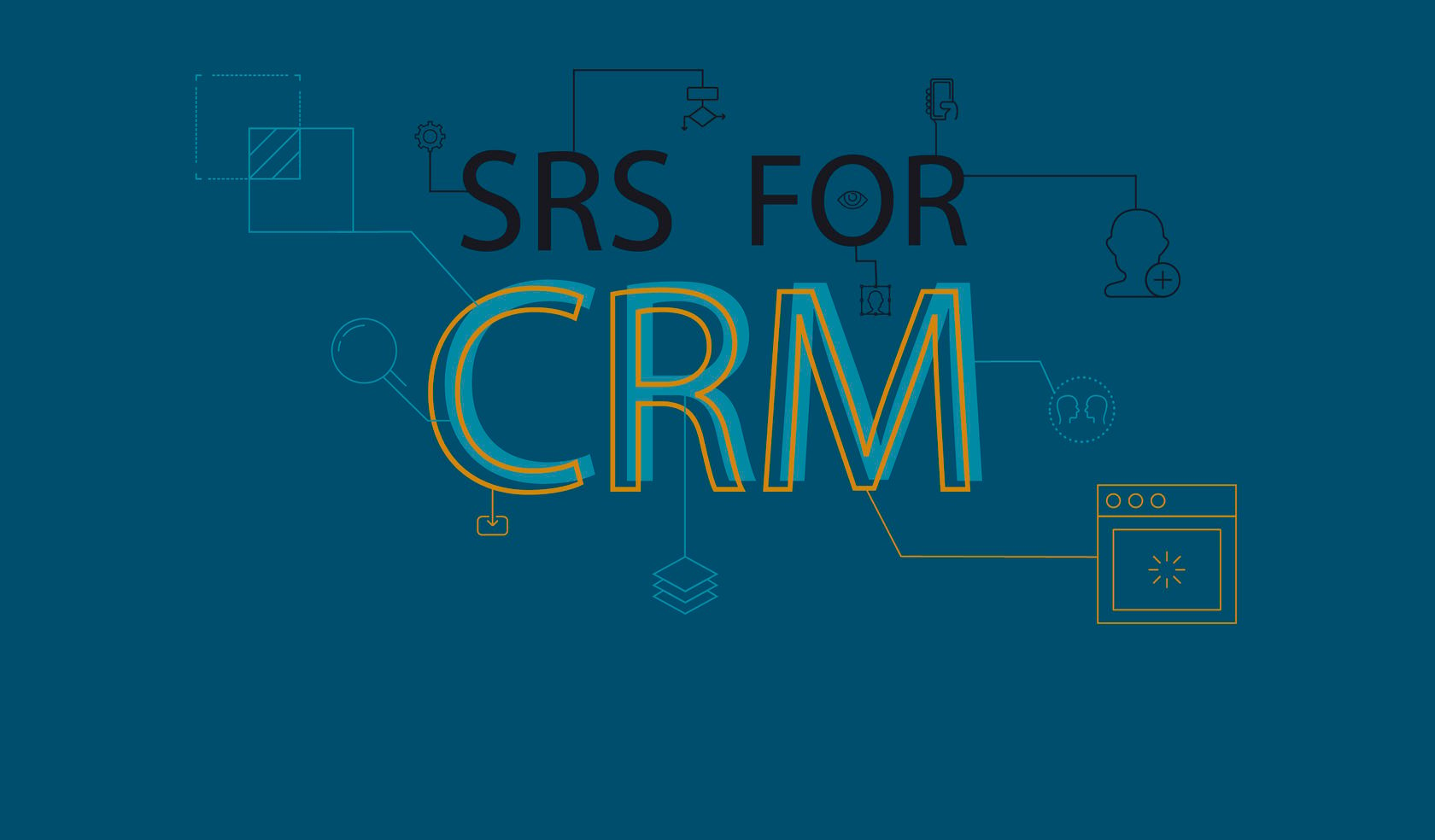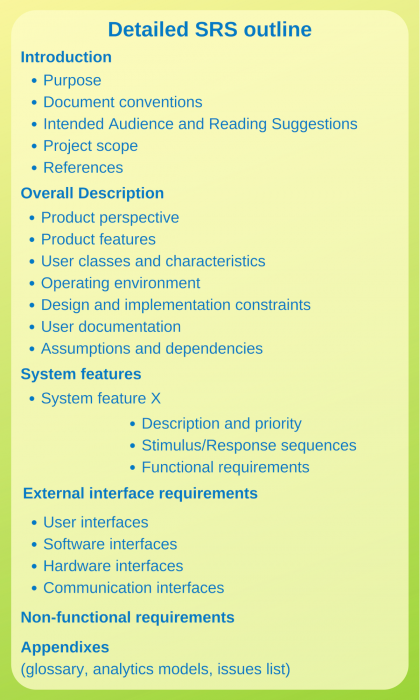
When you decide you need a CRM system, you can’t expect your chosen web development company to read your mind and come up with a perfect solution without your input. If you want the project to meet your business objectives, start with a critical requirements’ assessment. To help your planning, we have prepared a detailed guide and an SRS template example.
Does your CRM need a software requirement specification?
Every development project should start with a software requirement specification (SRS), whether you design a gaming app or a CRM. An SRS document is a map of where you want the project to go that highlights all the main stops and landmarks. When you have a plan in mind, your development journey will go smoothly, without unnecessary detours. As a result, you will get to your destination (a finished product) much sooner.
Before you seek help from a custom software development company, write an SRS with answers to these questions:
- What do you want your project to achieve?
- How will you check whether the product meets your needs?
- Which factors will limit the development process?
If you want to learn more about a step-by-step process of writing an SRS document, check out the advice from our developers. You’ll find detailed explanations for every stage of creating an SRS and a downloadable sample, that is as good as a business plan template.
Two ways a CRM can grow your business. Which one is right for you?
Customer relationship management, or CRM for short, is a system for business processes automation, customer data analysis and user experience improvement. A CRM allows you to make more money by spending less time on mundane marketing and sales procedures and improving your understanding of the customers.
Depending on your business needs, you can increase the revenue two ways:
- Use CRM to satisfy the operational requirements of your existing business. This path is often easier, as you possess an intimate understanding of your business processes and can get a better idea of your clients’ needs through CRM, thus increasing revenue. You might even settle for an out-of-the-box solution, though it might not meet all of your needs.
- Create your own app and offer it to other companies using a SaaS model. In this case, you will need to think of the big picture and take many factors into account. Even if you develop a product for a single industry, like a Real estate CRM, companies’ needs vary, depending on their target audiences and business models. You will need to prioritize critical features and cut the optional functions to keep the project manageable.
How to write an SRS for a CRM project?
When you seek web development services, an SRS helps you stay on the same page with designers, developers, QA specialists, and other members of the team. To ensure this goal, there are three major parts to every SRS: an introduction, a list of requirements, and a list of constrictions or limitations.
An SRS introduction should outline the scope and purpose of the project. Write your business objectives and preferred results after implementing the CRM system. If you develop it for your own business, you will get a clear vision of how the CRM should help you increase revenue. In case of a CRM SaaS, get a clear idea of your target audience, meaning business owners who would benefit from your product.
Requirements take up the largest part of a CRM for small business owners and large enterprises alike. They include:
- Technical requirements: hardware and software compatibility, scalability, integration options, and even development technologies.
- Functional requirements: mobile device integration, marketing and other business operations’ automation, sales tracking, etc.
To create a list of requirements, for a custom in-house CRM, use a map of your business process “as is”. Include each step of the customer’s journey through your company from the first contact to the sale, and on to upsales and client reactivation. Once you get a clear vision of the process, it will take no time to identify the hotspots that waste your resources. Then, you can work on your “to be” business flow, the perfect version of the customer interactions that leads to the sale most efficiently. After you realize which processes require automation and improvement, you can create a list of user requirements. Each of those will correspond to one or more of the CRM’s features.
For your company’s CRM, consider useful features, like:
- Offline access;
- Email and calendar integration;
- Training version or sandbox environment;
- Data duplication identification;
- Multiple languages and currency support.
When working on a CRM for your SaaS project, you can’t expect potential users to outline their requirements clearly. Most marketing and sale specialists use only a few of the CRM features. They don’t understand the system’s full potential. Therefore, you cannot rely on user feedback alone. Combine it with the knowledge of everyday troubles of the businesses in the chosen industry. The more of their problems your CRM can solve, the more revenue the SaaS model can bring you.
To increase the chance of success, your CRM system should:
- Come with customization capabilities to let companies tailor the system to their needs;
- Be mobile-friendly to make it available for both Android and iOS users;
- Possess flexible user hierarchy and access settings;
- Ensure maximum security of the company’s business and client data.

Writing an SRS, be specific, add as many details as possible. This will help the app developer team you hire understand your business needs and requirements better. Detailed SRS is essential when outsourcing the development to offshore and near-shore companies.
The list of constraints deals with timeframe and budget. You can outline the maximum allowed time for the project implementation and specify the deadline for each of the development stages. Maintenance and upgrade needs can also be included in the list of limitations. The Budget section will comprise the initial cost of development, the implementation and the maintenance budget.
Writing an SRS for a CRM system is no longer rocket science for you! Use our advice and software requirements specification template, and you will create the document from scratch or improve the first draft you’ve already written without trouble.



